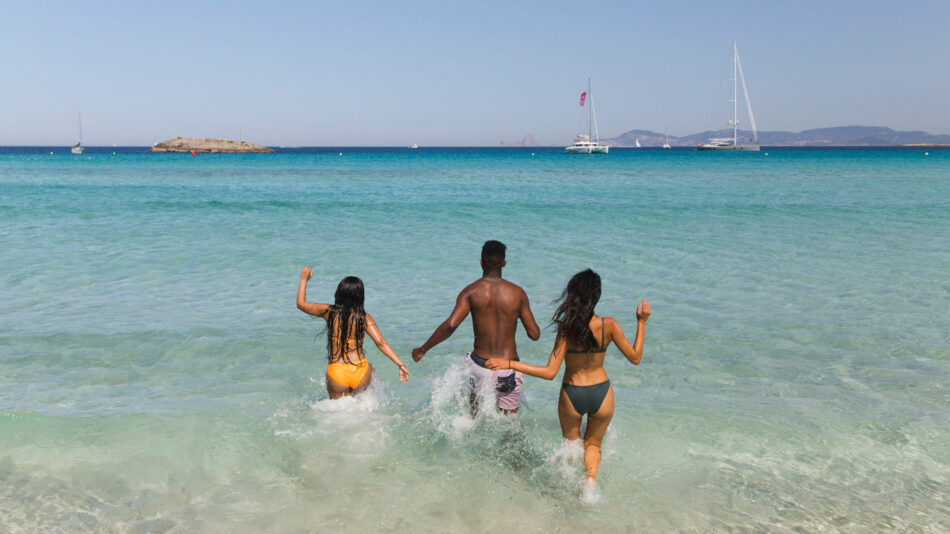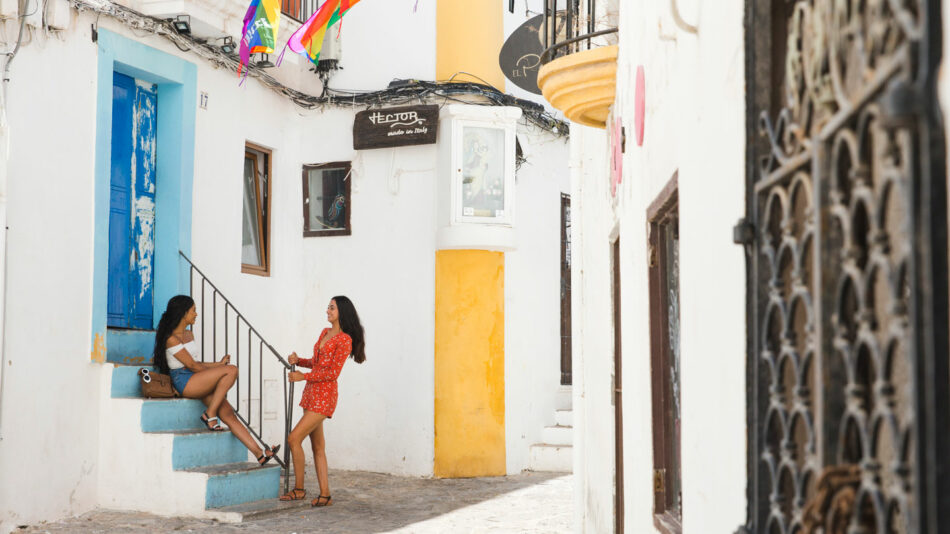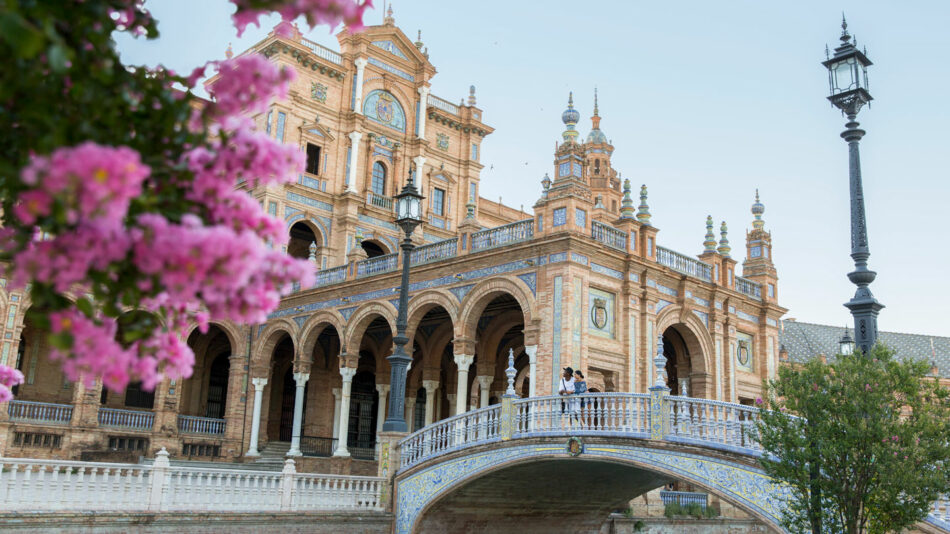
Heading to España? Congratulations! There’s a reason Spain has been voted the best holiday destination in the world, and it’s award winning beaches are just the start of it.
But what do you need to know before you travel to Spain? Here’s everything first time travellers usually want to know…
What currency does Spain use?
All throughout Spain (including Catalan regions) you’ll use the Euro.
What are the language basics?
In Spain they speak Spanish and Catalan in the Catalan regions like Barcelona. These basics will help get you around:
Hello – Hola
Goodbye – Adios
Please – Por favor
Thank you – Gracias
Cheers! – ¡Salud!
Where is the bathroom? – ¿Dónde está el baño?
How much is this? – ¿Cuánto cuesta este?
Can you speak English? – ¿Habla inglés?
One beer please – Una cerveza por favor
Delicious! – ¡Delicioso!

Best places to visit in Spain?
Truthfully, everywhere is good in Spain! But since that won’t help you plan, we recommend these hot spots:
Barcelona – the capital of the Catalonia region and well known for it’s art, night life and architecture, especially buildings by Gaudí.
Valencia – A seaside town with great beaches that’s known for paella (yep, it was apparently invented here), arts and science.
Ibiza – The party place! The stunning island off the East Coast has more than nightlife though, it also has relaxing beaches, villages and shopping.
Toledo – This ancient city is set in the hills and has a mix of Arab, Jewish and Christian monuments. It’s winding streets also hide some amazing foodie destinations.
Granada – You’ll find a lot of Arabic influence in the architecture of this gorgeous Southern city. One of the leading tapas hotspots, you can’t leave Granada without visiting the royal fortress, the Alhambra.
Seville – Famous for flamenco dancing, great food and ridiculously detailed architecture.
Madrid – The capital of Spain is a bustling city full of museums, parks and shopping.
Salamanca – This historic city is famous for it’s ornate sandstone architecture, universities and magical old towns.
San Sebastian – A beachside haven that has cobblestone streets, hikes with beautiful views and a laidback vibe.
ALSO READ: THE ULTIMATE PRE-HOLIDAY CHECKLIST

Can you drink the water in Spain?
Yes! The water is drinkable and safe everywhere in Spain (unless stated otherwise), including public drinking fountains.
What’s the deal with tapas?
Tapas is synonymous with Spain, but what is it and how does it work? Let us explain! Tapa (tapas when you eat more than one, which you will), is a small snack or appetizer. They can be served to share as part of a main meal (they may appear as ‘ración’ on the menu in this case), or included as a freebie with a drink purchase at a bar.
The bar type tapas is great value at 2 – 3 Euro for a small beer and one tapa. They’re serve yourself style and lined up on the bar. Just buy your beer and grab a tapa on the way back to your seat. Expect a lot of seafood in coastal regions, Spanish omelettes, potato, olives and cuts of chorizo and ham.

What’s with siestas?
“Why is everything closed in Spain in the afternoon?!” you cry? Because they’re all having a siesta! Expect the cities to look like ghost towns from 2pm – 5pm everyday as locals escape the heat and have a nap (or read a book, visit friends or other relaxing activities). It’s very traditional throughout the country and is especially observed in small towns. Don’t expect to be able to get a meal or shop during this time outside of the main cities!
What time should I be eating dinner?
Forget your 6pm dinners, in Spain they eat late. Because of their post-lunch siesta, most Spaniards work late and eat dinner at around 9pm… at the earliest! A lot of places won’t even be open for dinner until 8pm, so we’d recommend trying to fit to their schedule to make the most of it. In Spanish culture they also have quite long dinners, lasting until 11:30pm. If they’re going out, they’ll then hit the bars and clubs, and dance until 5am. #Tired

What should I pack for a trip to Spain?
The weather in Spain varies greatly from region to region. In the south it’s close to Africa and summer temperatures can soar into the 40’s (Celsius that is), but also be prepared for SUPER hot weather all over. Travel on the fringe months (May and September) for milder climes. You’re likely going to Spain for a summer holiday anyway though, so pack for one. Bring loose singlets and t-shirts, skirts, dresses and shorts. It’s likely to be very dry in some parts too.
At the height of winter it can snow however, so bring your warm clothes and good boots if you’re travelling between December and February. As for nightlife, they like to dress up in Spain, so feel free to pack heels and party dresses if you plan on going out a lot.
This handy packing guide should set you up nicely for a month in Europe.
What shouldn’t I be doing in Spain?
Everywhere has it’s own customs, and it’s always good to have a heads up on what might offend people where you’re heading before you arrive.
One example is the word ‘stupid’ in Spanish. It’s very offensive and you should not call anyone it, even as a joke.
The other thing to avoid in Spain is rushing and being impatient. Spanish people are naturally quite relaxed and run on their own time, therefore they may not take kindly to someone tapping their watch at them.
Another thing to be aware of is when you’re in a Catalan region, NOT to call these people Spanish. More than 7 million Catalans live in Spain and they’re very proud of their history and culture, so be mindful of this when talking to locals.
You should also cover up once you’ve left the beach, even in coastal locations, as wandering the streets in your bikini or speedos is seen as inappropriate, and more importantly, illegal. You could land yourself a €100 – €200 fine!
It’s also worth noting that when visiting a church, monastery or sacred place you must cover yourself and dress respectfully. Spanish culture has strong ties to Catholicism and it’s appropriate to dress like you’re going to church when you’re, well, going to a church.
One last little thing that’s rather superstitious but may raise an eyebrow if you do it, is passing the saltshaker from hand to hand. It’s considered bad luck and you should place it back on the table before the next person uses it.
